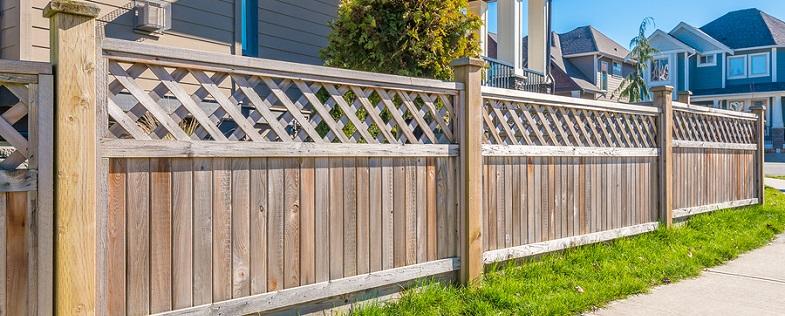
Wood fences installed by a professional fence service are some of the most attractive and useful property enclosures for a home, usually because there are so many different types of wood that can be used in a variety of ways. When a homeowner is planning a fence installation, there are a few things to first consider: the kind of fences wanted or needed and the individual properties of each type of fence. Understanding which different types of wood are most appropriate for fencing, and how this affects lifespan and required maintenance, are important factors to consider when selecting any wooden fence.
Common Wood Fencing Types
Technically, wood fences can be made from any type of tree, although softwoods are preferred as they are easier to cut, configure and manage. Softwoods are also easier to grow and harvest. Of all the available fencing woods that can be used, the three most popular are cedar, douglas fir, and pine. Based on different qualities such as durability, weather, and insect resistance, most fences are made using these types. To determine which one is the best choice for a specific fencing project, listed below is a little more about these woods and the positive and negative points on using them.
- Pine - White or red pine is the most readily available wood used for fences, decks, and even construction lumber as it grows fast, is easy to harvest, and is reasonably strong. It is a cost-effective choice, can be made into almost any kind of fence, and is quite versatile. Pressure-treated pine is especially strong and suitable for fence posts, although there are some drawbacks for use as fencing. It can warp as it ages, causing twisting, cracking, or splitting. Pine used outdoors must be pressure-treated to withstand weather and slow down softening or rotting. Pine also requires routine coating with a sealer, or regular painting, to prolong its life. It is a beautiful wood when left natural, although it is the least resistant of other widely used woods.
- Douglas Fir – This is another abundant wood type that is very popular for fencing. With similar benefits as of pine, douglas fir has a few added advantages. It is one of the strongest softwoods, which can make it preferable over pine. It does not require treating, can be left natural, and will retain its yellowish look for a while before acquiring a gray hue, which can be delayed with sealing. It also does not warp or twist as much as it dries. Cost is its main disadvantage and is otherwise very suitable and workable for most fencing applications.
- Cedar - Cedar is the last of the more popular softwoods. It is beautiful and fragrant, definitely a preferred choice for fences and decks. It is insect resistant and does not require painting or staining. Usage for fence posts is discouraged as it can rot from absorbing too much moisture. One problem with today’s cedar supply is the current restrictions on harvesting the oldest trees. As a result, the most readily available cedar is young and soft, which makes it the most expensive of the three types.
Based on these properties, a homeowner should select fences according to cost, durability, maintenance requirements, and availability. All wood fences will require some care and servicing over a lifespan, with some requiring more than others. Contact an experienced, local fence company today to discuss the best options for specific fence ideas for your home and property!
Looking For Wood Fences In College Station TX?
College Station Fencing Can Help You Find The Perfect Fence!
Call Us At 979-553-6447 – Right Away!
Additional Articles:
Wood Decks - How To Have The Right One For Your Home!
Looking At Fences - Your Options!
Will A Good Fence Increase The Value Of My Property?
